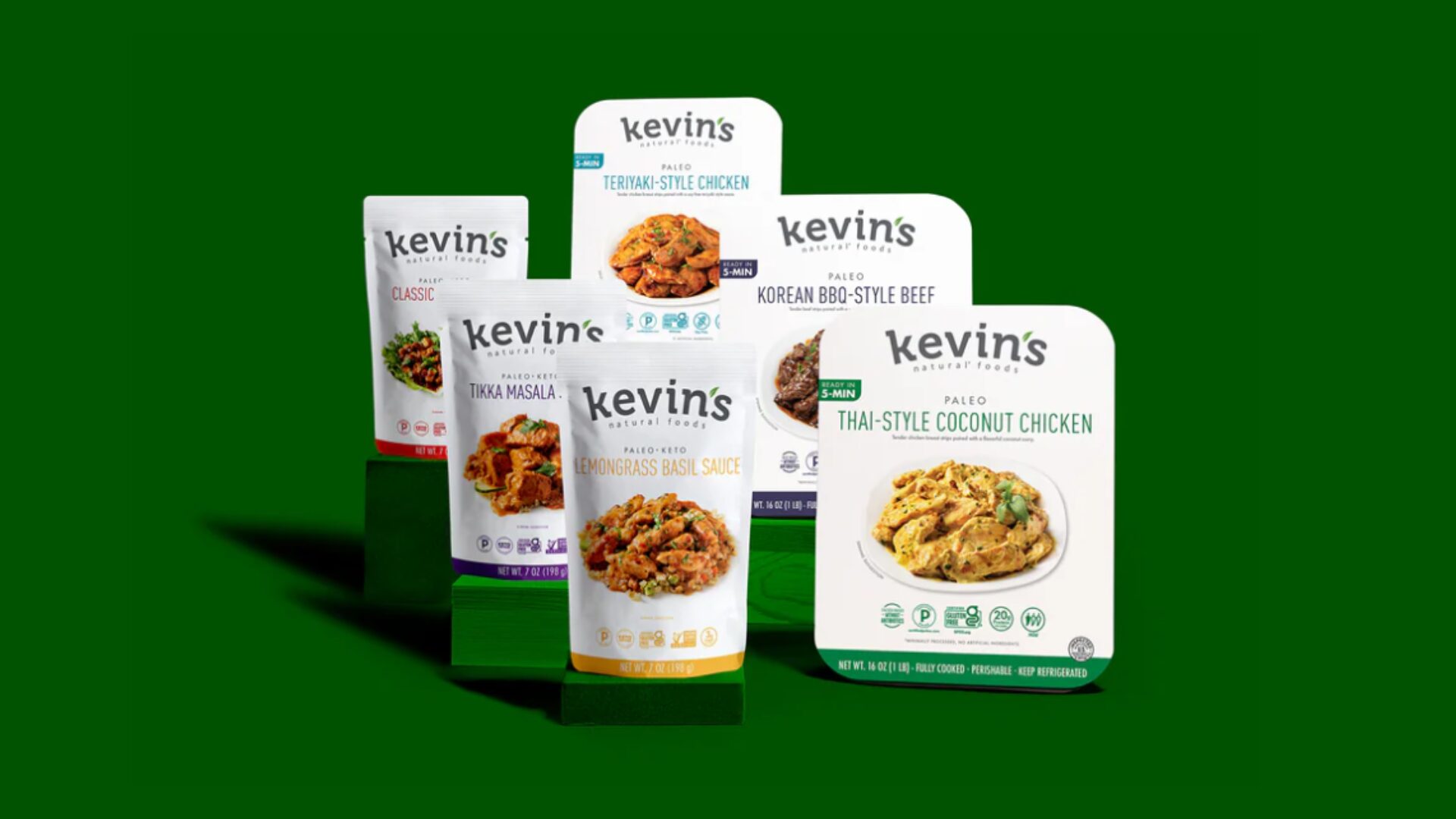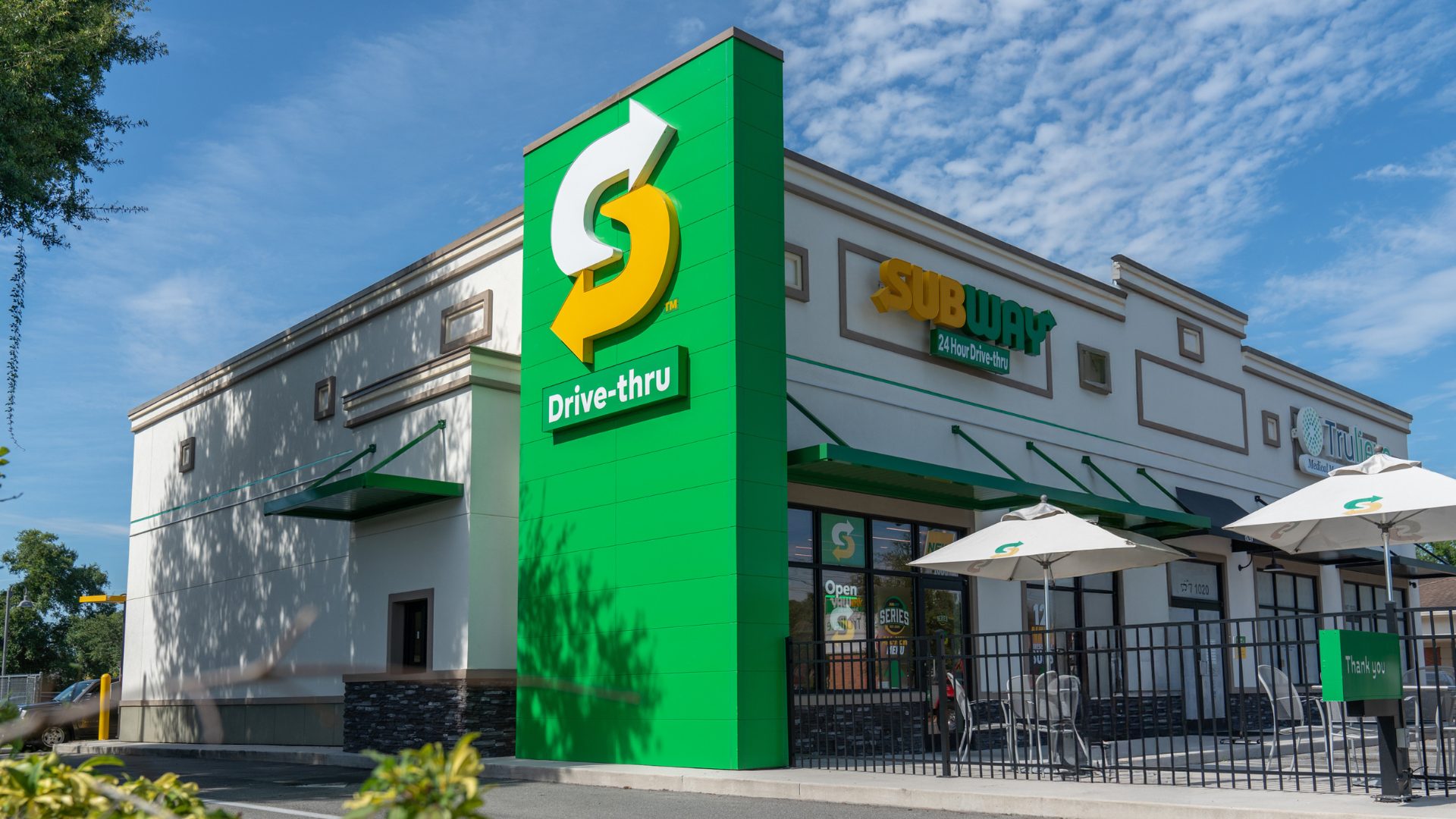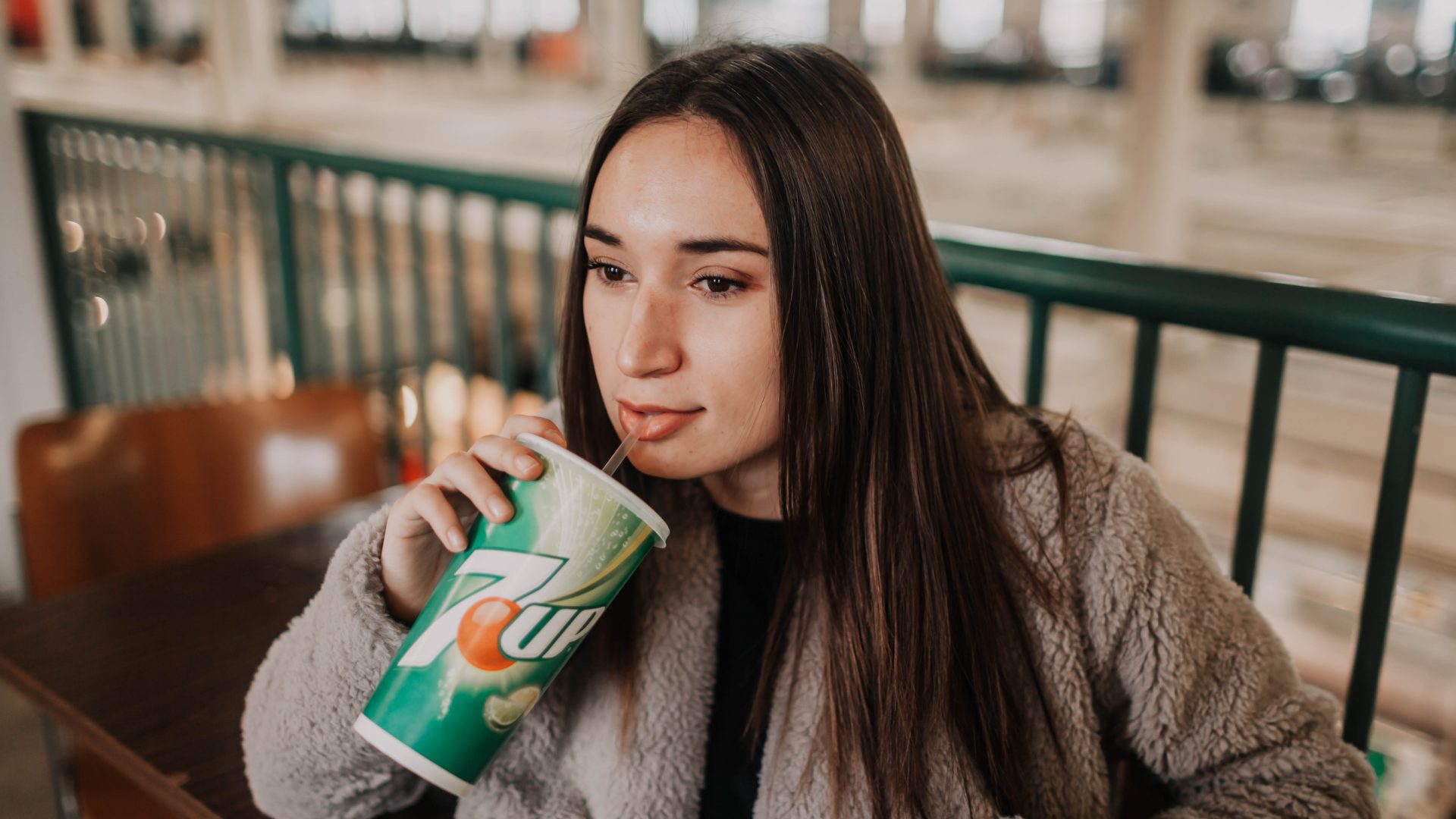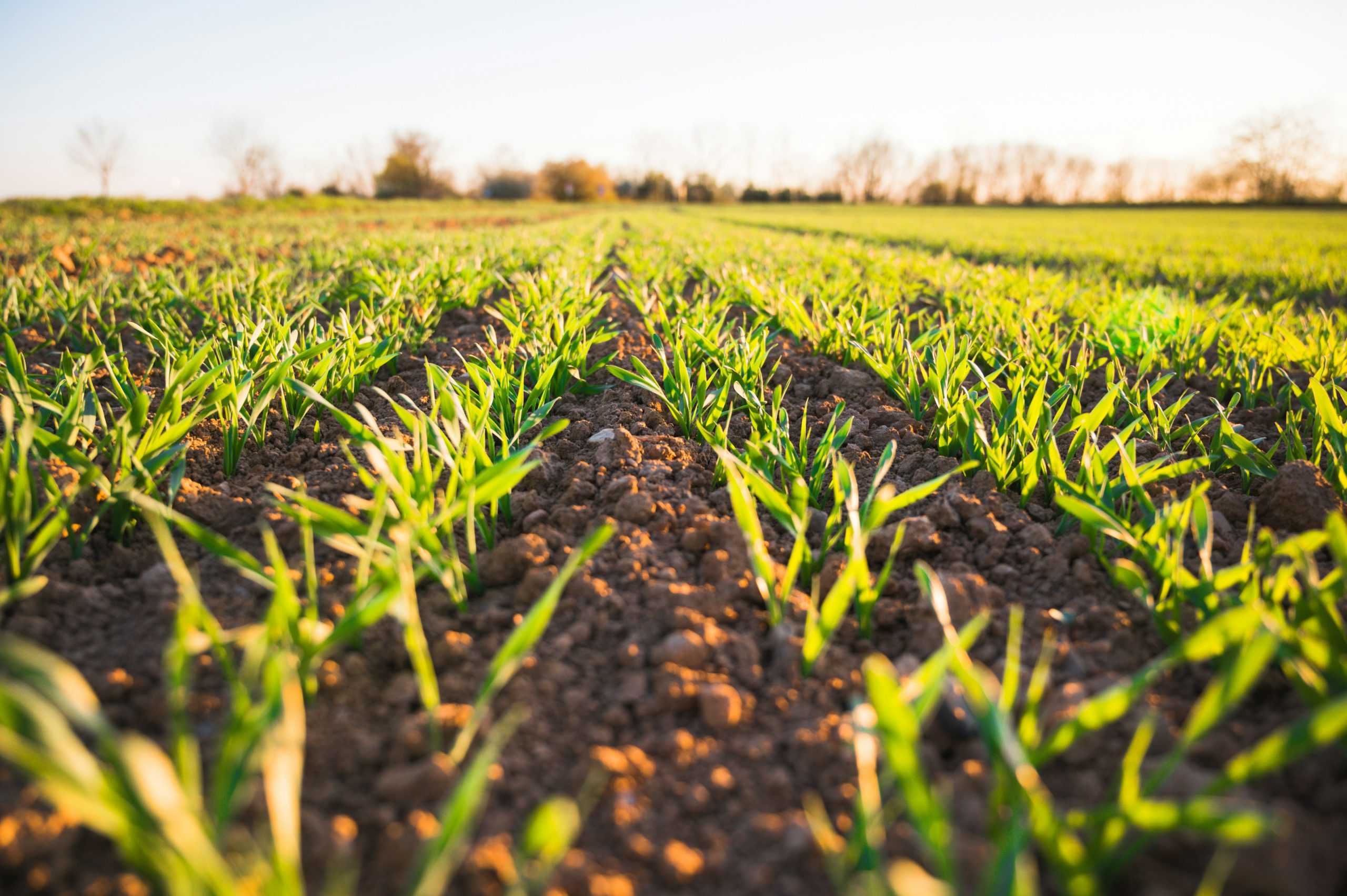Quarterly Opinion by Premium Growth Solutions
You’ve seen the bright white packaging in the deli department or perimeter displays at Whole Foods. Kevin’s Natural Foods is now at peak ACV for refrigerated meals; you’re just reading about it. How did this happen, industry savants?
No sexy TikTok influencer campaign.
No viral YouTube anchor video.
Not founded by a celebrity.
No splashy Inc. magazine cover.
No chest-beating Series A press release.
And…an admittedly vanilla trademark.
Of the top-tier business media, only Forbes wrote about Kevin’s before its 2023 acquisition by Mars. Kevin’s grew undeterred by lockdowns, declining Deli department traffic, and the overhyped explosion of DTC brands.
Yet, in just two years, Kevin’s Natural Foods became the most recent 21st-century food unicorn, nailing almost every go-to-market best practice you could put into an essay. Most importantly, Kevin’s rocket-ship rise revealed the new power of resolving intersecting trade-offs with unique manufacturing technology.
The Idea
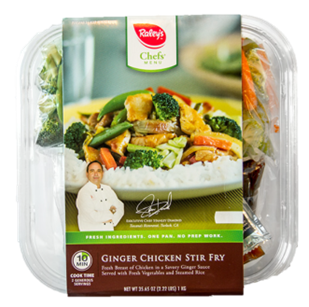
Heat-at-home meal kits that require no chopping, measuring, or kitchen skill have been tried before in the Deli – many times. Old Deli managers remember these Home Meal Replacement product lines. And it has never really worked. Here’s why. Dumping components into a pan and heating them has an established consumer audience, but not for a price premium and NOT for an eating occasion where people need a Chef on the package – using frozen bagged meal products like Voila! Or Bertolli’s does not constitute “cooking” in the minds of anyone I’ve ever met in America’s pantries. It does represent “making dinner.” The nuance here is critical.
Chef’s Menu was an overdesigned, less convenient (10-12 min. prep) innovation that was overpriced for the actual low-stakes dinner occasion consumers use frozen equivalents on.
OK, forget the Chef thing – time for plan B.
Around 2017, Costa and Kevin McWray regrouped, conducted fresh research, and formed a new brand – Kevin’s Natural Foods. This time, they had better insights into the problem to solve.
“In the early stages, I knew we had something exciting. We would host focus groups and met with hundreds of shoppers showing them early product ideas and getting their feedback. At that point, I definitely knew then that we were meeting an unmet need by combining flavor, convenience, and health. [my emphasis].”
In my own words, I see the innovation this way:
- Real entrepreneurs don’t quit after the first foray and prepare financially to iterate.
- Don’t sell America the whole meal in precooked components; just sell superb components separately. The consumer has their own recipe in mind. Yes, they are ‘cooking.’ Respect this. Doing this also expands the number of occasions in which you can be relevant (i.e., intra-household velocity growth).
- Offer unique technology that enhances flavor retention in an ocean of frozen, processed “meh” (made by Hormel, Reser’s, Bob Evans, and others), which the consumer can not reasonably do at home. Sous vide is time-consuming and doesn’t work when so many of us decide on dinner 30 minutes before we want to eat. Sous vide is a uniquely luscious way to eat seafood and meat, especially red meat, and many Americans have still not experienced it.
- Solve a complicated, long-standing trade-off – trading off flavor and clean ingredients for convenient, heat-and-eat components. This is becoming more and more necessary to scale consumer innovations really quickly.
- Don’t put weird symbolism (e.g., sous vide) on the front panel – keep the symbolism cool (e.g., paleo, keto)
- Don’t co-brand with a retailer trademark…this is like “co-hosting” a party with Ryan Gosling. No one will ever notice you once he’s there.
To my knowledge, Kevin’s products are the first commercially scaled sous vide meal components in U.S. retail. This kind of technical innovation puts a moat between you and anyone ready to finance a competitor but requires a lot of money up front to have this approach. This was not a “credit card” launch.
Placement
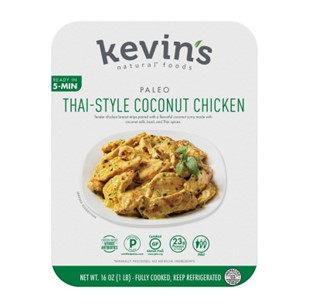
Kevin’s first product shipped in August 2019 to Costco in the Bay Area, then quickly expanded to Costco nationwide, producing $4.5M in P.O. revenue in the first quarter of operations. This kind of cash infusion allows a self-manufactured business to expand quickly on a modest seed investment for a pilot facility. [ii]
Early trial was the primary and only signal to go, go, go. Some velocities are so huge you don’t need to wait for repeat purchase data. By early February, only weeks before the first COVID-19 lockdown in Washington State, Kevin’s launched at Raley’s, Savemart (where one of the founders once worked), Whole Foods, HEB, and Schnucks. The national explosion had begun. Kevin’s was also available DTC in six-pack bundles and on Amazon by this time. By the end of its first year of sales, Kevin’s was in roughly 6,000 stores.
By the end of 2021, Kevin’s was selling in over 11,000 traditional grocery, natural, specialty, club, and mass stores. [iii] And the brand pulled in roughly $100 million in annual revenue. That is hyperbolic growth we commonly refer to as “unicorn-level.” But a unit price point of $9.99 also made scaling much quicker than with a $3.99 unit price.
Pricing
Kevin’s launched in supermarkets at $9.99 for pre-cooked, pre-seasoned meat that serves three (or two hungry males). This put Kevin’s then (and now) at price parity with similarly sized Del Real pulled meats, Jack Daniel’s, and Hormel refrigerated, seasoned “entrees.” Kevin’s had no intention of being premium priced because it was willing to sacrifice margin to maximize the initial trial rates (knowing this would create retailer FOMO, if it worked). This is the boldest move they made. It requires both self-manufacturing AND substantial seed monies to fund this kind of big hit to margin, but it accelerates time to profitability and allows you to ramp up production in a way no co-manufacturer can. But, if the ultra-fast growth does not materialize, the business implodes very quickly without financing. Despite what you see at Expo West, price parity is the optimal way to launch ultra-high growth food brands with large addressable markets (e.g. Skinnypop, Kevin’s, and Kind), but it is a path largely unavailable to your average amateur (who would have neither the money to fund the losses nor the know-how to set up a pilot facility with new technology). Launching this way is generally the privilege of a highly experienced, finance-savvy team.
Kevin’s did nothing flippantly, even though it moved fast when it received market signals of strong trial. When you blow through Costco’s weekly store minimums with a new brand, you have clearly stepped into a massive, gaping, existing consumer need. This just does not happen very often. Maybe once every couple of years in food.
But you have to be ready to commercially scale at unicorn pace. Few new founders are, even if they stumble on demand geysers like this. At Innov8, they spent time modeling the various rungs of scale and its financial and logistical requirements before they even shipped the first pallet to Costco.
“At Kevin’s, we spent the time to model out what our ingredient costs, labor, and freight fees would look like when our volumes grew to make sure we understood how much business we would need to secure to achieve realistic margins.” [iv]
One could interpret this kind of planning as cocky or arrogant, sure, but if they had not lined up their future supply chain in 2019, imagine what would have happened during the pandemic with its global supply chain crisis? Planning tends to compound your luck over time. Rigorous financial planning does not take weeks, so there is no reason NOT to do it as a founder with big ambitions.
Promotion
Early on, in the fall of 2019, before the Costco results were clear, the company experimented with influencer marketing on Instagram and other channels, but this activity dropped off as word of mouth and sheer killer repeat purchase levels made it largely unnecessary.
Whereas DTC wunderkinds like Dr. Squatch Soap had to continuously (and successfully) push paid ads out to scale, Kevin’s is one of those Skinnypop unicorns that did next to no real, modern consumer promotional work—nothing I could find, at least.
Take-Aways
Unicorns almost always tap into long-standing unmet needs (or clusters of needs) where dissatisfaction has been accumulating just under the surface of human consciousness for years. These zones of innovation require zero education at all to take off, just highly visible placement at a mass-market price. Kevin’s won in the mouth very quickly and rapid distribution took care of the rest. This is not normal for consumer brands, but it does happen.
Kevin’s is also a strong indicator to future food entrepreneurs that the most bankable innovation areas in the 2020s are where multiple forms of converging dissatisfaction exist. Finding these areas of converging pain requires in-depth research with consumers. There is just no other way to perfect a final iteration without it. Founder intuition is no longer enough. What are consumers unhappy trading off that they only mutter about?
Additionally, since the financing boon for rank amateurs has ended, there is less ability to be a third or fourth mover and scale for five to seven years with an upside down, leaking P&L. The best way forward for food entrepreneurs is not available to the rank amateur: self-manufacturing. But this is the smartest way to go-to-market, if you want to be profitable quickly and be ready to scale demand much faster than any co-manufacturer ever would (or could).
Be financially well-prepared, technically innovative, and consumer-centric.
[i] Outdoor Sportswire, “Kevin’s Natural Foods Announces Brand Launch, Enters Supermarkets Nationwide” February 11, 2020, Accessed August 7, 2024 at https://www.outdoorsportswire.com/kevins-natural-foods-announces-brand-launch-enters-supermarkets-nationwide/
[ii] Simon Marwing, “Purpose At Work: How Kevin’s Natural Foods Leads A Clean Eating Revolution,” Forbes, August 23, 2021, accessed August 7, 2024 at https://www.forbes.com/sites/simonmainwaring/2021/08/23/purpose-at-work-how-kevins-natural-foods-leads-a-clean-eating-revolution/
[iii] https://www.prnewswire.com/news-releases/kevins-natural-foods-announces-minority-investment-from-towerbrook-capital-partners-and-newroad-capital-partners-301368884.html
[iv] Chef Vicky Colas, “Kevin McCray of Kevin’s Natural Foods: 5 Things You Need To Create a Successful Food Line or Specialty Food” Medium, October 5, 2020, accessed August 7, 2024 at https://medium.com/authority-magazine/kevin-mccray-of-kevins-natural-foods-5-things-you-need-to-create-a-successful-food-line-or-3f960f4f07b


